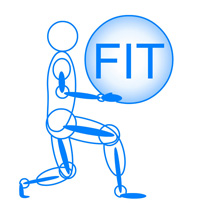We recently celebrated our 30th Anniversary of being in business and helping organizations to significantly lower back and other sprain/strain injuries. In the words of the Grateful Dead, “What a long strange trip it has been”. It started out with a bright idea of making a living by performing a service that enormously helps employees to prevent very painful injury events on and off the job, and helping organizations to reduce workers’ comp costs and lost workdays. How hard could that be? Ha!
Developing an employee training curriculum of ergonomics, biomechanics, and stretching was a matter of culling out of already developed sciences key data that pertained to teaching people how to correctly use their bodies correctly in their lives. Some very bright people were tasked with this assignment and did a phenomenal job. Frankly, an incredible job, considering our goal was to prevent musculoskeletal injuries for every type of job description that existed from warehouse, drivers, cops, nurses, flight attendants, janitors, manufacturing, food handling, teachers, office workers, and everything in between.
Initially, we prematurely spiked the football in the end zone. We thought our curriculum was awesome, but the real test was do employees embrace it? That’s where things hit a roadblock. You see, in order for us to train employees we, of course, needed a company to hire us. What we didn’t know was that companies around the world had tried for decades (maybe centuries?) to prevent back injuries but had failed. The common refrain was “my employees won’t listen!” So training thereby never resulted in fewer claims. This “training doesn’t work to prevent back injuries” was falsely validated by a woefully conceived 1990s study published in the New England Journal of Medicine concluding that “back schools” do not result in changes in behaviors. Incredibly we were all supposed to believe that it was possible to train 12-year-olds how to do backflips on 4” balance beams in gymnastic class, but teaching someone how to lift a darn box properly is way too difficult.
 So much for our piece of cake simple idea of preventing back injuries in the workplace. Our newly created science-based curriculum was only half the answer. The problems to be solved were now beyond the physical sciences. What good is training if employees don’t listen? Or if they listen, then don’t apply the knowledge in their lives routinely? The key problem which needed to be solved and that which would be the key to our success was: How can we get employees to buy into learning and to habitually incorporate our Backsafe® principles into their lives for their benefit? What were the barriers causing this disconnect between employees and organizations?
So much for our piece of cake simple idea of preventing back injuries in the workplace. Our newly created science-based curriculum was only half the answer. The problems to be solved were now beyond the physical sciences. What good is training if employees don’t listen? Or if they listen, then don’t apply the knowledge in their lives routinely? The key problem which needed to be solved and that which would be the key to our success was: How can we get employees to buy into learning and to habitually incorporate our Backsafe® principles into their lives for their benefit? What were the barriers causing this disconnect between employees and organizations?
Why weren’t employees listening to their companies who were attempting to help them? Here is a “partial” list of what we discovered:
- Trust: If employees don’t trust the “company” or management, rightfully or not, communications from the organization will be rejected or at least questioned. Example #1: Company made various promises to employees and didn’t follow through with them—thus the organization can’t be trusted. Example #2: A competitor places rabble-rouser employees into a company. These employees make up stories about how cheap the company is and this and that, thereby eroding employees’ trust in their employer. Trust erodes based on lies. Employees will virtually do the opposite of whatever the company says to do.
- Employees won’t “listen” if the organization’s purpose for the injury prevention training is to save the company money. This is easily perceived by employees.
- Trainers aren’t good communicators.Please remember that in order to prevent injuries a sea-level shift has to occur at the employee level. Does the trainer have the ability to clearly communicate concepts in a fashion that “reaches” the employees well enough to motivate a change in physical behaviors?
- Trainers aren’t subject matter experts and lack subject credibility.
- Trainers are subject matter experts but don’t know how to teach the subject correctly. Note: A Nobel Peace Prize College professor may be in fact a very poor teacher.
All of the above. Is the trainer an employee of the “mistrusted” organization? Is the trainer considered credible and an expert in biomechanics, stretching, ergonomics, and has personal knowledge of the physical demands and vernacular of the employees’ jobs?
 Preventing $40,000 back claims is easy if you know how. There are countless barriers that prevent employees from embracing injury prevention techniques to better their lives. FIT has discovered some magic on how to easily achieve a very high level of buy-in and yes, even enthusiasm from employees. The truth is that no sane person wishes to be in pain or to suffer a life-altering injury. We just figured out how to remove barriers to employees’ learning and found out how to properly train job-specific biomechanics and stretching to achieve the ultimate catalyst for a change of behavior—personal realizations experienced during the training—“I had no idea I twist all day long, even at home!”
Preventing $40,000 back claims is easy if you know how. There are countless barriers that prevent employees from embracing injury prevention techniques to better their lives. FIT has discovered some magic on how to easily achieve a very high level of buy-in and yes, even enthusiasm from employees. The truth is that no sane person wishes to be in pain or to suffer a life-altering injury. We just figured out how to remove barriers to employees’ learning and found out how to properly train job-specific biomechanics and stretching to achieve the ultimate catalyst for a change of behavior—personal realizations experienced during the training—“I had no idea I twist all day long, even at home!”
Call us (1-800-775-2225). We are the professionals at preventing back, shoulder, and other sprain/strain injuries. We can succeed in any environment, any job task!
Prevent tomorrow’s injuries today!™
Dennis Downing, CEO
Future Industrial Technologies, Inc.
dennis@backsafe.com
(800) 775-2225


Recent Comments